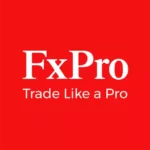How to distinguish between real and fake Forex trading?
Common Traps and Mistakes of True and False Forex Trading
In forex trading, the identification of true and false transactions is particularly critical. Due to the relatively high openness and transparency of the forex market, there are still many investors who are prone to fall into misunderstandings. Here are some common pitfalls and myths to help you quickly identify genuine and fake trades:
1. Suppose false advertising
Many forex platforms attract investors through false advertising. These ads usually exaggerate the profit potential and induce investors to invest immediately. These platforms often lack transparency and reliability, and investors may face high risks or even losses. Therefore, investors should be vigilant and avoid being attracted by advertisements and making impulsive decisions.

2. Trap: opaque trading platform
Some forex platforms may sell with high leverage, but in fact the platform is small and financially weak. These platforms may be more inclined to attract novice investors, luring them through high risk. Investors should understand the reliability and safety of the platform through its qualification, scale and historical record.
3. Invalid transactions
Some false transaction records may mislead investors by falsifying data. For example, false trading records may exaggerate profits or hide losses, misleading investors into believing that the investment was successful. Investors should verify the authenticity of their transactions through multiple channels, including viewing trading logs and historical data.
Ignoring the authenticity of the market
False forex trading may be based on market conditions, but the actual conditions may be completely different. Investors should pay attention to the actual trend of the market and avoid being misled by false data. Investors should trade through formal analytical tools and platforms to ensure the accuracy of data.
Ignoring investor protection measures
Some platforms may lack investor protections, such as compensation plans or dispute resolution mechanisms. Investors should read the terms and conditions of the platform to understand its protection measures and avoid losses due to platform problems.
Ignoring sources of funding
Investors should pay particular attention to the transparency of funding sources. If the source of funds for the platform is not clear, there may be a risk of misappropriation of funds. Investors should ask the platform to provide detailed information on the flow of funds and verify the reliability of funds through third-party institutions.
Ignoring investor feedback
Investors should pay attention to the feedback and evaluation of other investors. By viewing the reviews of other users, you can understand the operating status of the platform and the investor experience. If there is a large number of negative reviews, you should carefully consider whether to choose the platform.
Summary
There may be many traps and misunderstandings in the forex market, and investors need to be highly vigilant. By understanding common problems such as false advertising, opaque platforms, and invalid transaction records, investors can effectively avoid being misled and ensure the safety and profitability of their investments.
In-depth analysis: how to distinguish between true and false forex trading
After understanding the common pitfalls in forex trading, we will then dive into how to accurately identify genuine and fake forex trading through multi-channel verification and independent analysis. With this approach, investors can make more informed investment decisions.
1. Multi-channel validation
Multi-channel verification is an important method to distinguish between true and false forex transactions. Investors can verify the reliability and authenticity of the platform:
a. Check platform qualification
Investors should understand the qualifications and background of the platform. Formal forex platforms usually require relevant licenses and compliance certificates. Investors can learn about their qualifications and background by consulting the platform's official website or industry database.
B. Focus on historical records
Investors should check the history of the platform, including the time of establishment, operation history, etc. Smaller platforms may lack historical records, while larger platforms often keep detailed transaction records and historical data.
c. View the size of funds
Investors should pay attention to the platform's capital scale and scale growth trend. Platforms with larger funds are usually more reliable, while platforms with abrupt or unusual growth trends may have problems.
d. Understanding investor protection measures
Investors should require the platform to provide clear investor protection measures, including dispute resolution mechanisms, compensation plans, etc. These measures can effectively protect the rights and interests of investors and avoid losses due to platform problems.
e. Ensure transparency
Investors should look at the transparency of the platform, including the accessibility of trading logs and historical data. Platforms with high transparency often provide detailed transaction records and information. Investors can check the platform's privacy policy for transparency and data handling.
2. Analyze the authenticity of the data
By analyzing the authenticity of the data, investors can better distinguish between true and false forex transactions. Here are a few common methods:
a. Transaction log analysis
Investors can analyze whether the trading records of the platform are true through the trading log. For example, you can determine whether a transaction is true or false by looking at the date, time, and amount of the transaction log and comparing it to the actual market.
B. Historical data validation
Investors can verify the authenticity of transactions through historical data. For example, you can determine whether a transaction is true or false by viewing the historical data provided by the platform and comparing it to the actual market.
c. Institutional evaluation
Investors can check the evaluation and feedback of other investors to understand the operation status of the platform and the authenticity of trading records. If there is a large number of negative reviews, the platform should be chosen carefully.
d. Expert analysis
Investors can understand the authenticity of the platform's transaction records and data through expert analysis. For example, you can judge the credibility of the platform by looking at the reviews of the financial media or industry experts.
3. Find reliable guidance and platforms
After discerning between genuine and fake forex trades, investors should look for reliable guidance and platforms. Here are a few reliable options:
a. Select a qualified platform
Investors should choose a platform with qualifications and background. These platforms are generally more reliable, with more authentic trading records and less risk for investors.
B. Choose a platform with high transparency
Investors should choose platforms with high transparency. These platforms usually provide detailed transaction records and historical data to help investors better distinguish between true and false forex transactions.
c. Choose a platform with a dispute resolution mechanism
Investors should choose platforms with dispute resolution mechanisms, which usually provide clear solutions to help investors protect their rights and interests.
d. Choose a platform with an investor protection plan
Investors should choose platforms with investor protection plans. These platforms usually provide investors with compensation and return services to protect investment interests.
4. Independent analysis
After distinguishing between true and false forex transactions, investors should conduct independent analysis to ensure their own judgment. The following are several methods of independent analysis:
a. Develop a trading strategy
Investors should develop a clear trading strategy, including stop loss, take profit, etc. Through independent analysis, investors can better control risk and ensure the stability of trading.
B. Regular monitoring
Investors should regularly monitor trading conditions and adjust their strategies in a timely manner if they find abnormalities. Through independent analysis, investors can identify potential risks and avoid losses.
c. Multi-asset allocation
Investors should make multi-asset allocations and avoid over-concentration in a single market or platform. Through independent analysis, investors can better spread risk and ensure the soundness of their investments.
Summary
Distinguishing between genuine and fake forex trades is a complex process that requires a high degree of expertise and experience on the part of the investor. Through multi-channel verification, analyzing the authenticity of data, finding reliable guidance and platforms, and conducting independent analysis, investors can effectively distinguish between true and false forex transactions and make more informed investment decisions. Investors should be cautious to avoid unnecessary losses caused by impulse.

























